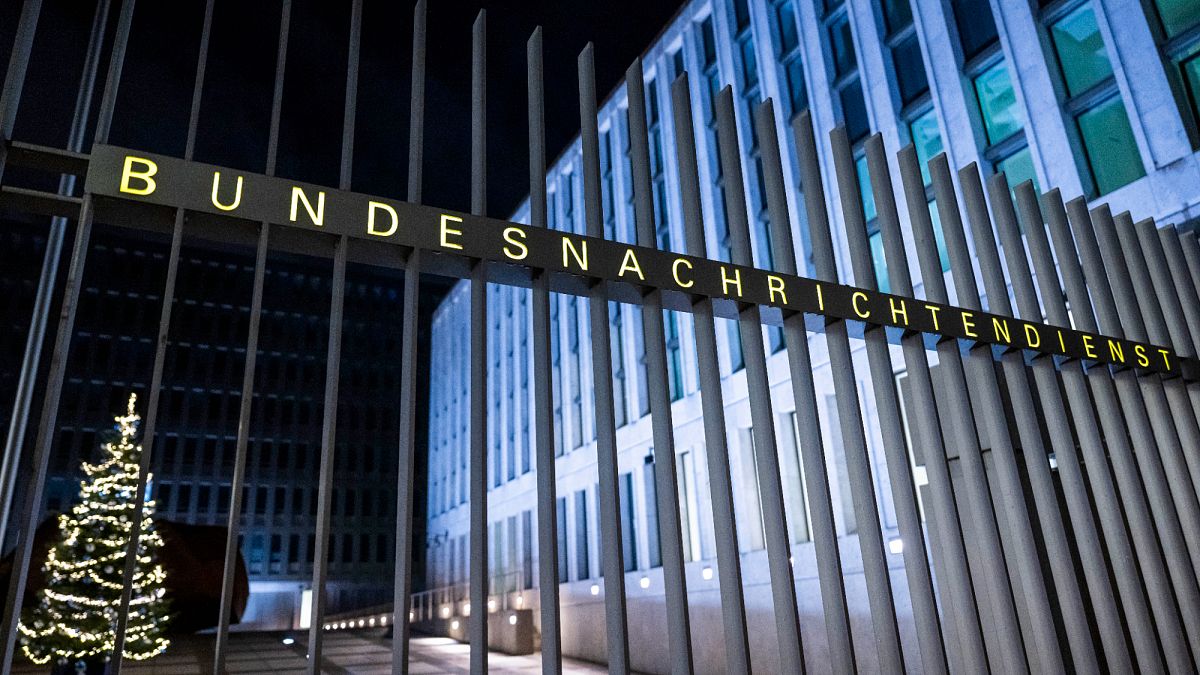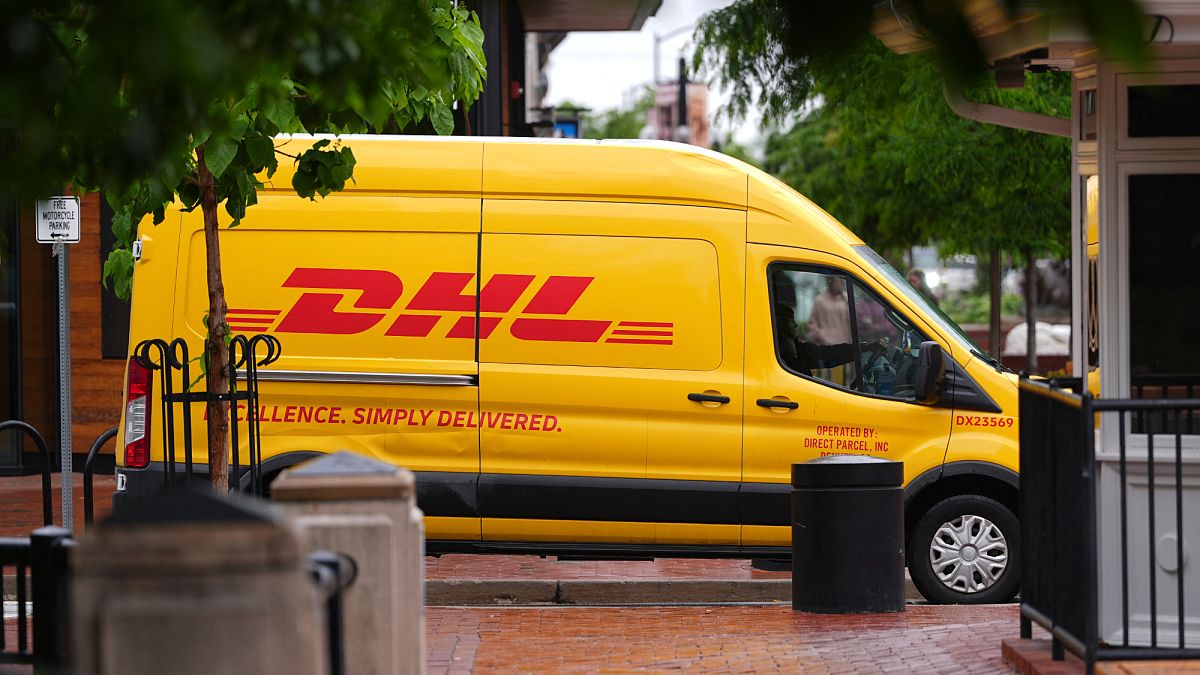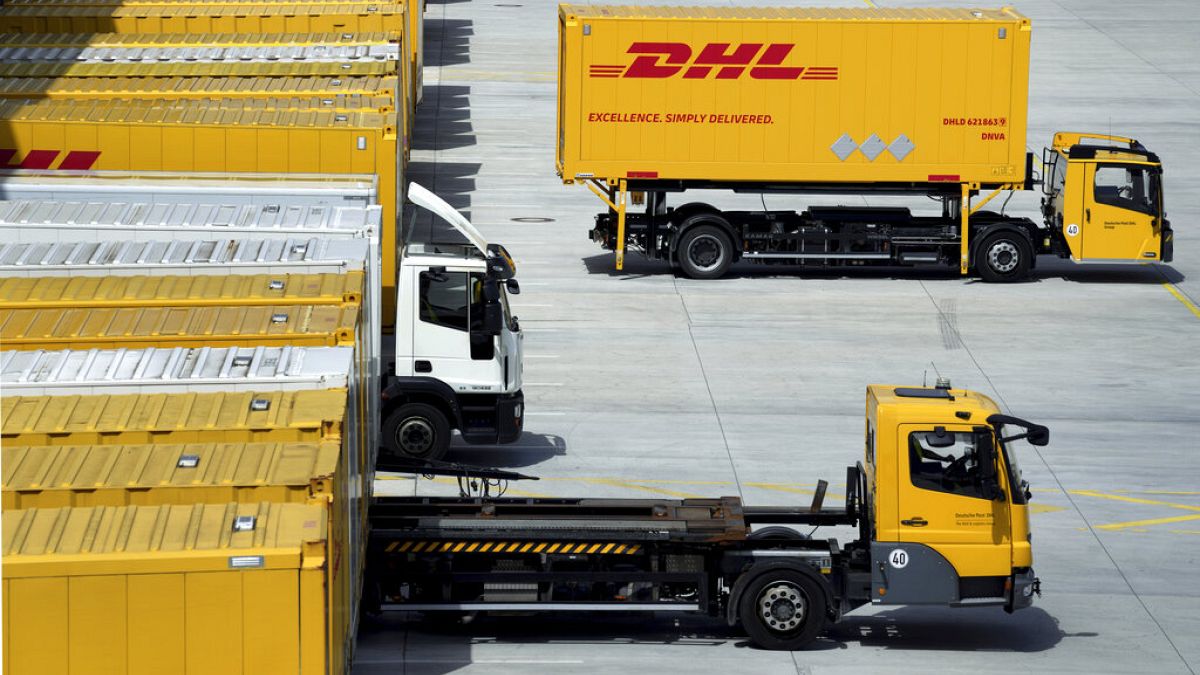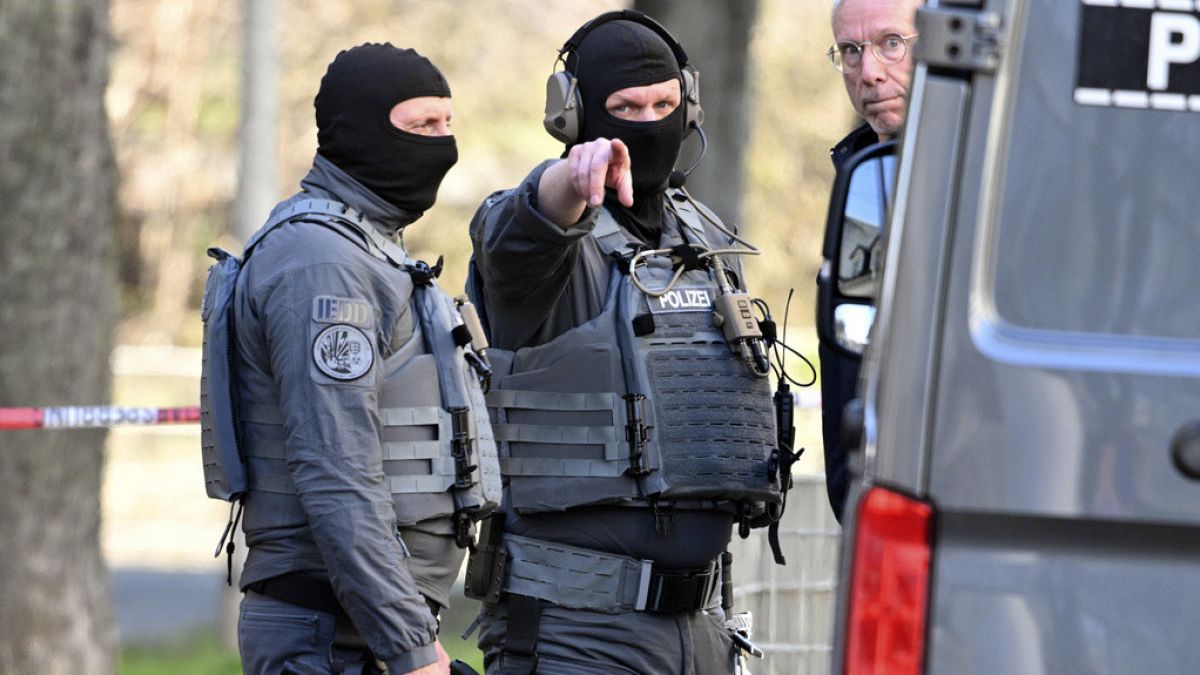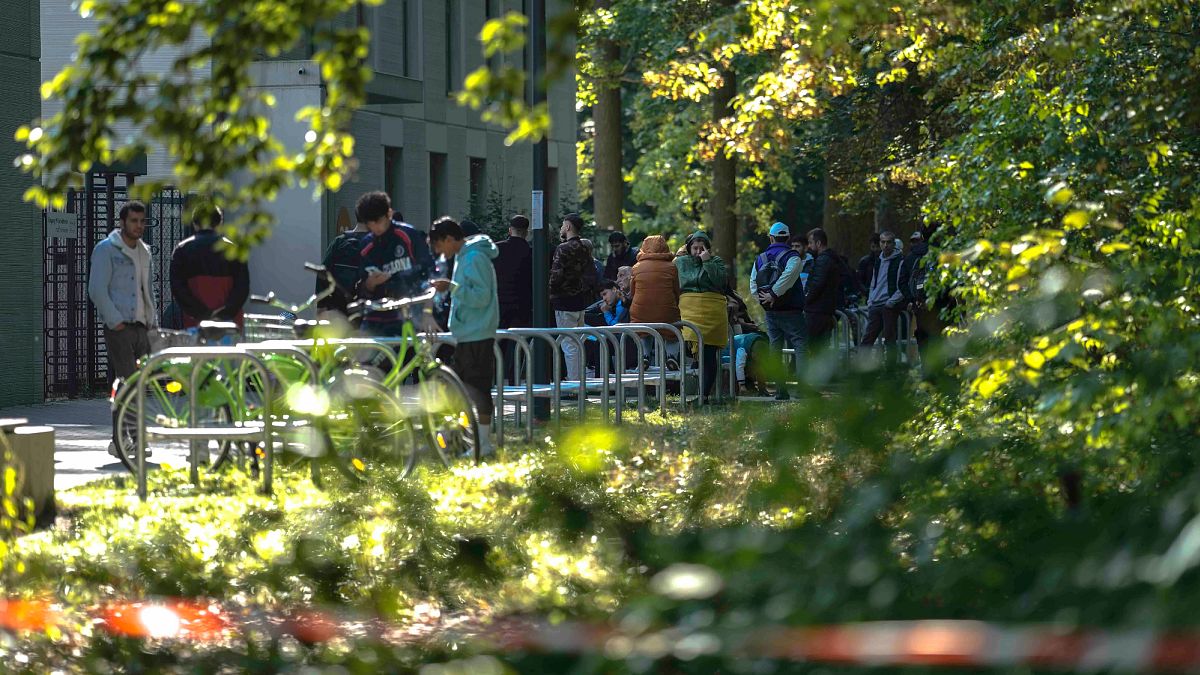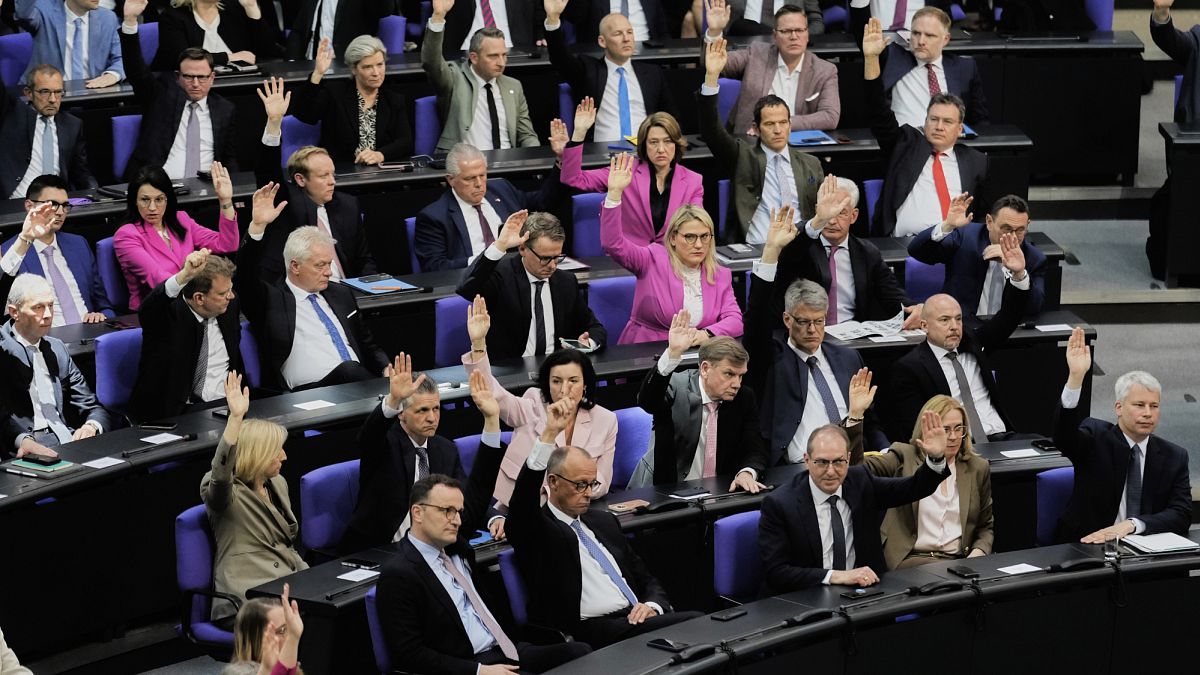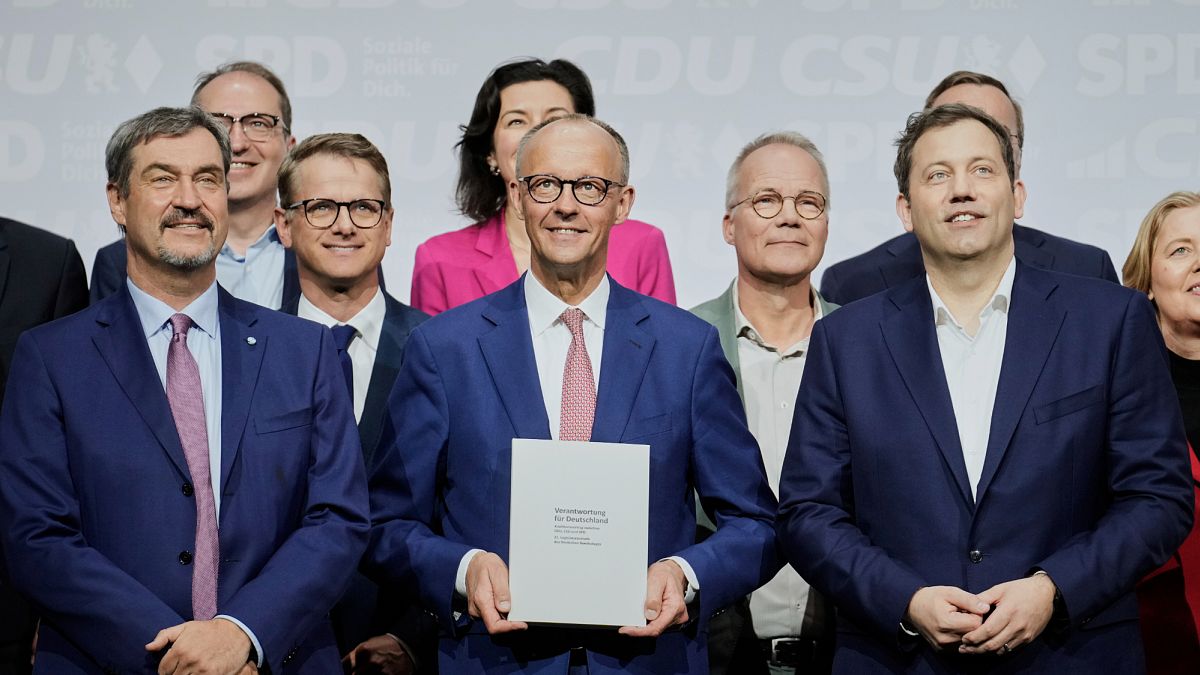The US Is finally sending ATACMS to Ukraine. Now it’s Germany’s turn
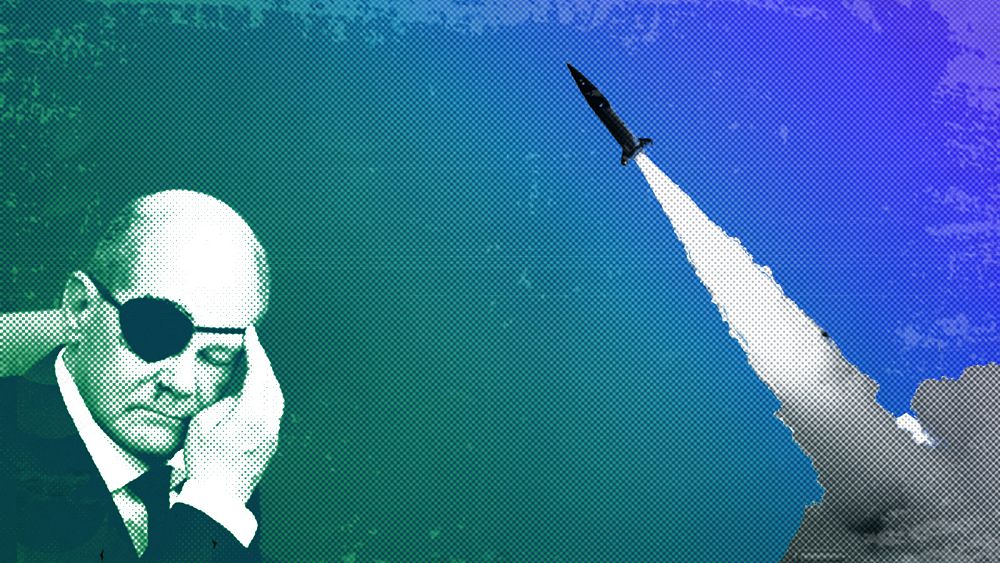
The opinions expressed in this article are those of the author and do not represent in any way the editorial position of Euronews.
The longer Berlin waffles, the longer it’ll take for the Taurus to reach the battlefield. For Ukraine, that means more lives lost and more infrastructure destroyed, John Hardie writes.
While meeting with his Ukrainian counterpart last week, US President Joe Biden reportedly promised to grant Kyiv’s longstanding request for the Army Tactical Missile System, or ATACMS.
Although not a silver bullet, ATACMS will offer an important addition to Ukraine’s arsenal of long-range precision-strike systems.
Now Germany should follow suit by sending Kyiv the Taurus air-launched cruise missile.
The Taurus will provide Ukraine with much-needed additional capacity, and it’s better equipped to destroy key bridges and other targets of tactical importance.
What does ATACMS provide on the battlefield?
Much about Washington’s ATACMS pledge remains uncertain. The Biden administration hasn’t publicly specified when it will send the missiles or how many it intends to provide, although press reports suggest the number will be modest.
Even a few dozen ATACMS could be useful for Ukraine, which will use them to attack high-value targets deep behind the front line. But the smaller the number, the more limited the likely impact.
It’s also unclear which ATACMS variant Ukraine will receive. Newer versions carry a 227-kilogram unitary warhead and can hit targets up to 300 kilometres away.
By contrast, the warheads on older variants — known as Block I and Block IA — disperse hundreds of smaller anti-personnel/anti-materiel (APAM) bomblets, while Block I has a range of just 165 kilometres.
As of last month, the US Army reportedly had just under 1,500 ATACMS in its possession, 364 of which are APAM-carrying variants.
Press reports indicate Washington plans to give Ukraine one of the APAM-carrying versions.
These missiles can be useful against Russian air defence systems, surface-to-surface missile systems, and parked aircraft, although targets deep in Crimea would be beyond Block I’s range.
Different tools for different purposes
As a ground-launched ballistic missile fired by mobile launchers, ATACMS offers an all-weather capability that’s both highly survivable as well as capable of responding to fleeting opportunities.
This means Ukraine could potentially use ATACMS to strike time-sensitive targets that can displace too quickly for its Storm Shadow and SCALP-EG air-launched cruise missiles, supplied by the United Kingdom and France, respectively.
However, APAM-carrying variants of ATACMS aren’t designed to destroy sturdy structures. They’ll be ineffective against hardened Russian command posts, supply depots, and bridges.
The good news is Kyiv has other means to strike those targets.
In particular, the Storm Shadow and SCALP-EG carry a powerful two-stage warhead that can penetrate hardened structures.
Indeed, Ukraine has already used those missiles to strike a number of important Russian command-and-control and logistics nodes, including the headquarters of Russia’s Black Sea Fleet just last week.
While this so-called “deep battle” likely won’t trigger a large-scale collapse in the Russian defence, Kyiv sees these strikes as a key part of its ongoing counter-offensive.
The arsenal at Kyiv’s disposal still falls short
The bad news is Ukraine’s stocks of Storm Shadows and SCALP-EGs are dwindling, and the British and French likely cannot provide many more anytime soon.
What’s more, the missiles Ukraine received have a maximum effective range of around 250 kilometres — evidently insufficient to strike the Crimean Bridge at acceptable risk to Ukrainian pilots.
Russia uses that bridge to transport equipment and supplies to Crimea to support its forces in southern Ukraine, making its destruction a high priority for Kyiv.
A newly developed land-attack variant of Ukraine’s Neptune anti-ship cruise missile might have sufficient range, but it’s even more scarce.
Kyiv will eventually receive some much-needed additional capacity in the form of the Ground Launched Small Diameter Bomb, or GLSDB, a new system developed by Saab and Boeing.
Relatively cheap, the GLSDB will provide Ukraine with a cost-effective means of striking targets on which it can’t afford to expend a more expensive missile.
However, the GLSDB has a maximum range of 150 kilometres, too short to reach most of Crimea. And while US officials initially said the system would arrive this autumn, it now looks unlikely to reach Ukraine until early 2024.
The Taurus to the rescue?
Fortunately, there’s another alternative: Germany’s Taurus air-launched cruise missile.
With an over 500-kilometre range, the Taurus could easily strike targets in and around all of Crimea.
Its 481-kilogram tandem warhead can destroy hardened targets, and its sophisticated fuze could make it better suited for destroying bridges.
Admittedly, available stockpiles are finite. By some estimates, only 150 to 300 of Germany’s 600 Taurus missiles are currently combat-ready.
But Berlin could likely supply enough missiles to sustain Ukraine for at least a few months, given Kyiv’s previous expenditure rate.
Chancellor Olaf Scholz, who faces growing domestic and international pressure to give Ukraine the Taurus, reportedly fears that Kyiv might use it to strike inside Russian territory, risking escalation.
The longer the wait, the more lives it will cost
That concern can be readily addressed. Kyiv has honoured its commitment not to use American, British, or French weapons to strike Russian territory, and it’d surely do the same with the Taurus.
Moreover, the missile can be geo-fenced to preclude strikes in Russia — a solution Berlin is reportedly pursuing.
Yet as of last week, Scholz’s team was still “studying” the issue, according to the German defence minister.
The longer Berlin waffles, the longer it’ll take for the Taurus to reach the battlefield. For Ukraine, that means more lives lost and more infrastructure destroyed.
It’s time for Germany to join its Western allies and send Ukraine the Taurus now.
John Hardie serves as Deputy Director of the Russia Program at the Foundation for Defense of Democracies, a nonpartisan research institute based in Washington, DC.
At Euronews, we believe all views matter. Contact us at [email protected] to send pitches or submissions and be part of the conversation.
Source: Euro News


